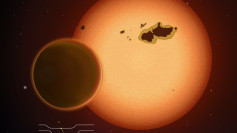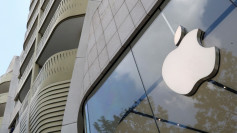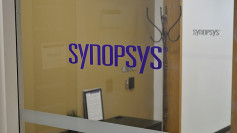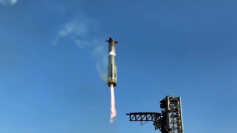The Parker Solar Probe has completed a successful flight through the sun's corona, or upper atmosphere, collecting particles and magnetic fields. It became the first spacecraft to "touch the sun," sixty years after NASA set the aim and three years after it launched.
The announcement was made at the American Geophysical Union's Fall Meeting in New Orleans Tuesday. Research from the solar milestone was published in Physical Review Letters.
"Parker Solar Probe 'touching the Sun' is a monumental moment for solar science and a truly remarkable feat," Thomas Zurbuchen, the associate administrator for NASA's Science Mission Directorate, said in a statement.
"Not only does this milestone provide us with deeper insights into our Sun's evolution and (its) impacts on our solar system, but everything we learn about our own star also teaches us more about stars in the rest of the universe."
The Parker Solar Probe was launched in August 2018 with the goal of "touching the Sun," with the research of solar winds as its primary focus. These are streams of subatomic particles that develop in the Sun's atmosphere and are blasted outward, carrying the Sun's magnetic field with them to influence our planet and others in the solar system.
Scientists aim to learn more about how energy and heat pass through the Sun's atmosphere by studying these solar winds, which have piqued their interest for decades. The winds here accelerate from subsonic to supersonic speeds, and a deeper knowledge of this process can offer information about how life on Earth evolved, as well as how other stars in the universe formed.
The Parker Solar Probe set a succession of records on its way to the Sun, eventually becoming the fastest object ever built, reaching speeds of 363,660 mph (586,864 km/h). This occurred during the spacecraft's flyby of the Sun last month, the 10th of 24 closer orbits it will undertake over the course of its seven-year mission, bringing it to within 3.83 million miles (6.1 kilometers) of the surface.
Scientists expect to learn more about these types of solar phenomena as the probe continues to fly closer to the Sun. This might entail learning how the switchbacks originate, as well as how the corona gets heated to millions of degrees and why it is hotter than the solar surface underneath it.
Parker Solar Probe will have made 21 near encounters to the sun throughout the course of its seven-year mission. In 2024, the probe will orbit the Sun within 3.9 million miles of its surface, putting it closer to the star than Mercury, the closest planet to the Sun.





